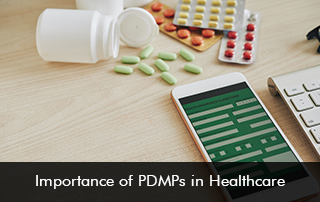Prescription drug monitoring programs help healthcare providers make sure that they are well aware of patients who are addicted or are at risk of becoming addicted to dangerous prescription drugs. The PDPM program is a proactive strategy to combat the opioid crisis in the United States.
What are Prescription Drug Monitoring Programs?
PDMP programs are electronic databases that monitor controlled substance prescriptions at the state level. This facilitates healthcare providers better comprehend the patients that are at opioid risk and then provide targeted treatment or therapy. Once targeted care can be offered with this vital information substance abuse can be reduced.
The Benefits of PDMPs
Prescription drug monitoring programs help to elevate patient safety as clinicians can easily identify the patients who are using controlled substances. Healthcare providers can also detect patients who are obtaining opioids from multiple pharmacies. Some states in America have made it compulsory for clinicians and pharmacists to check PDMPs before prescribing controlled substances.
PDMPs make it simpler for healthcare providers to understand a patient’s complete medical history. These robust programs help prescribe appropriate drugs which will keep patients safer and also enhance health outcome levels.
Targeted treatment can be provided to patients as providers have a better insight into every detail of the patient’s medical history and other risk factors. Once an effective treatment plan can be rolled out, patients can be on the road to recovery.
On a statewide basis, these programs are powerful enough to act as public health tools to proactively inform interventions to be taken by professionals or state health departments which will impact care decisions nationally.
Why is it important to use a PDPM partner?
- The seamless integration with Electronic Medical Records (EMR) Software or EHR software solutions offers ease of usage for users.
- Prescriptions can be easily tracked like never before.
- State requirements and standards can be easily met.
Positive Outcomes of PDMP
The states with PDPMs have a decrease in the following in contrast to the states without these programs.
- Drug abuse and misuse of drugs.
- Oxycodone shipments.
- Use of benzodiazepine especially in young women.
- Prescription opioid treatment admissions every year.
Best practices for prescription drug monitoring programs
In 2016, National Governors’ Association suggested five steps to optimize PDMPs and also enhance their effectiveness. The recommendations were as follows,
- Step 1 – Before prescribing controlled substances providers need to check the prescription drug monitoring program.
- Step 2 – The data from PDMP should be leveraged to provide analysis and reporting to law enforcement.
- Step 3 – Pharmacists should report to the PDMP within 24 hours.
- Step 4 – Make the programs easy to use by integrating PDMP data into the EHR Software.
- Step 5 – Ensure PDMP interoperability through states.
Moving Ahead
The use of prescription drug monitoring programs in the US has helped to decrease the number of inpatient stays due to opioid usage and also decrease the number of opioid-related cases in the ER. When armed with the right information about patients risk providers are well-equipped to provide prompt treatment to patients to combat substance abuse. PDPM aims to reduce opioid misuse, overdose, and abuse to improve patient safety.






